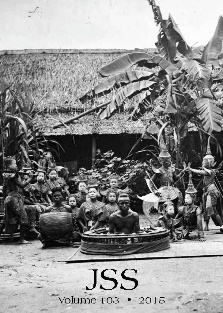The Early Syām and Rise of Mäng Mao: Western Mainland Southeast Asia in the “Tai Century”
Main Article Content
Abstract
During the “Tai Century” (c. 1250-1350), the early Syam, ancestors of the modern Shan, emerged as major challengers to Burmese supremacy in western mainland Southeast Asia. The tension reached a climax when the twin Burmese capitals, Pinya and Sagaing, fell to Mäng Mao, the most awe-inspiring kingdom in the upland Tai world. The emergence of the early Syam as a major military power and the subsequent rise of Mäng Mao to trans-regional paramountcy were closely associated with and paralleled by the “Mongol Century” in China. Besides the advanced military technology of the Mongols, the early Syam also derived great benefit from the economic boom on a pan-Eurasian scale under the Pax Mongolica, as exotic commodities of the subtropics and precious metals as well as gems were readily available in their homeland, through which the Southwest Silk Road, the principal trade artery connecting China to India, traversed.


